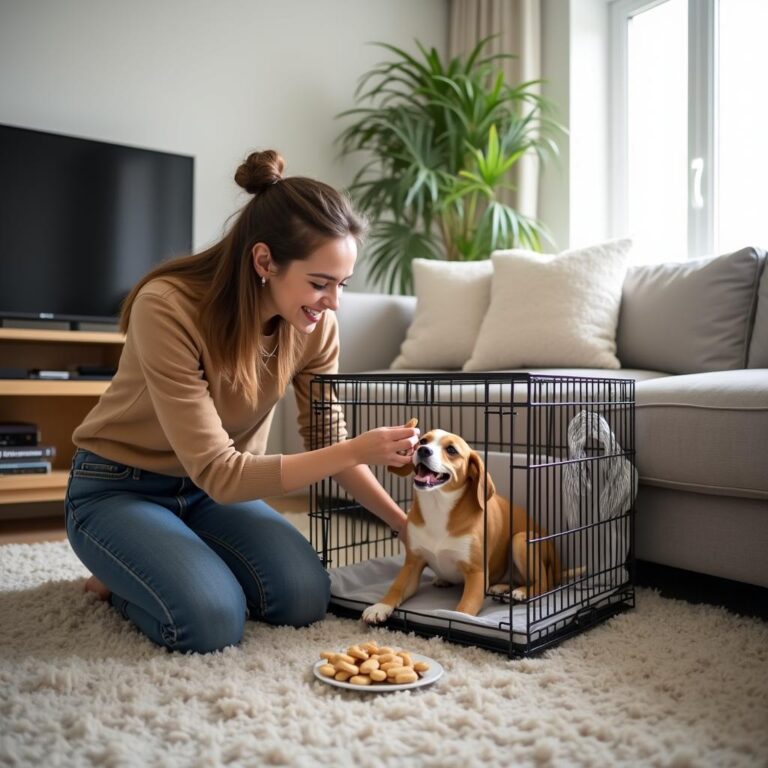Adopting a Rescue Pet: Everything You Need to Know for a Smooth Transition
Bringing a new pet into your home can be one of the most rewarding experiences of your life. Adopting a rescue pet not only provides a loving home for animals in need but also enriches your life in countless ways. However, it’s important to remember that adopting a rescue pet is a commitment that requires planning, patience, and understanding. In this comprehensive guide, we’ll cover everything you need to know about adopting a rescue pet to ensure a smooth transition for both you and your new furry friend.
Why Choose to Adopt a Rescue Pet?
Before diving into the nitty-gritty of the adoption process, let’s take a moment to appreciate why adopting a rescue pet can be a fulfilling journey.
- Saving Lives: By adopting, you are giving a homeless animal a chance at a better life. Shelters are often overcrowded, and adopting a pet can help free up space for another animal in need.
- Unconditional Love: Rescue pets have an incredible ability to love and bond with their new owners. Their gratitude for being saved can create a deep and unbreakable bond.
- Variety of Options: When adopting a rescue pet, you can find animals of all sizes, breeds, and ages. Whether you’re looking for a puppy, a kitten, or a senior pet, rescues have many options.
- Reduced Costs: Adoption fees are typically lower than buying a pet from a breeder. Most rescue organizations also provide vaccinations, spaying/neutering, and sometimes even a health check before the pet goes home.
Preparing for Adoption
Adopting a rescue pet is more than just walking into a shelter and picking out an animal. It requires preparation, research, and thoughtful consideration.
1. Assess Your Lifestyle
Before you start looking for a pet, take some time to evaluate your lifestyle. Consider factors such as:
- Time: How much time can you dedicate daily to your pet, including playtime, walks, grooming, and training?
- Space: Do you have a suitable living environment for the type of pet you want to adopt? Larger dogs need more space, while some small breed dogs can do well in apartments.
- Allergies: Are there any allergies in your household that could affect your ability to keep a pet?
2. Do Your Research
Not all pets are the same, and different breeds have different needs. Research various breeds, ages, and temperaments to find a good match for your lifestyle.
3. Prepare Your Home
Make your home a safe and welcoming place for your new pet. Essential preparations include:
- Pet-proofing: Remove any hazards such as toxic plants, small objects, or anything a pet might chew on.
- Designate a Space: Set up a quiet area in your home where your new pet can feel safe and comfortable.
- Supplies: Purchase necessary supplies like food, water bowls, a bed, toys, and grooming essentials.
The Adoption Process
Once you feel ready, you can begin the adoption process. Here are steps to follow:
1. Visit Animal Shelters and Rescue Groups
Start by visiting local animal shelters and rescue groups. Spend time with different animals to gauge their temperament and see who you connect with. The staff can offer insights into each animal’s history and behavior, guiding you in making a decision.
2. Complete an Application
Most shelters require an adoption application. This usually involves filling out personal information, your living situation, and how you plan to care for the animal. Be honest and thorough; this is crucial for the safety and well-being of the animals.
3. Meet-and-Greet
After submitting your application, you may have the opportunity to meet the pet you’re considering. This can involve an initial meet-and-greet, followed by a trial period to assess compatibility before finalizing the adoption.
4. Finalize Adoption
Upon approval, you’ll need to sign an adoption contract and pay any associated fees. Make sure you understand the terms, including what happens if you can no longer care for the pet.
Transitioning Your New Rescue Pet
The first weeks and months after adopting a rescue pet can be crucial in establishing a strong bond. Here’s how to help them adjust:
1. Establish a Routine
Pets thrive on routine, so establish a feeding, walking, and play schedule. This can help them feel secure in their new environment.
2. Give Them Time and Space
Your rescue pet may need time to adjust. Allow them to explore their new home at their own pace, and provide a safe space if they feel overwhelmed.
3. Socialization
Slowly introduce your new pet to family members and other pets. Supervise all interactions to ensure everyone feels comfortable and safe.
4. Training
Basic obedience training is essential for a well-adjusted pet. Consider enrolling in an obedience class or utilizing online resources to teach your pet commands and proper behavior.
5. Regular Vet Visits
Schedule an initial vet visit shortly after adoption. Regular check-ups will help monitor your pet’s health and address any potential issues early on.
6. Create an Enriching Environment
Provide mental stimulation and physical exercise. Engage your pet with toys, puzzles, and playtime to prevent behavioral problems that can arise from boredom.
Conclusion
Adopting a rescue pet can be an incredibly rewarding experience that brings joy and companionship into your life. By understanding the needs of your new furry family member and providing a safe, loving environment, you can help ensure a smooth transition into your home. With patience and dedication, you’ll discover the unique bond that comes from adopting a rescue pet—a bond built on love, trust, and gratitude. So, are you ready to take the plunge and make a difference in a rescue animal’s life? Your future best friend is waiting for you!







